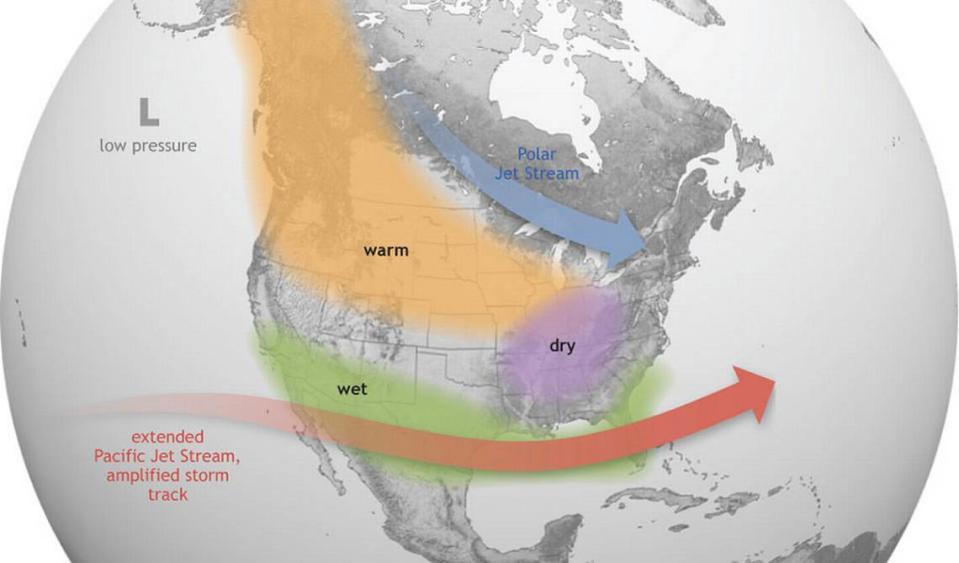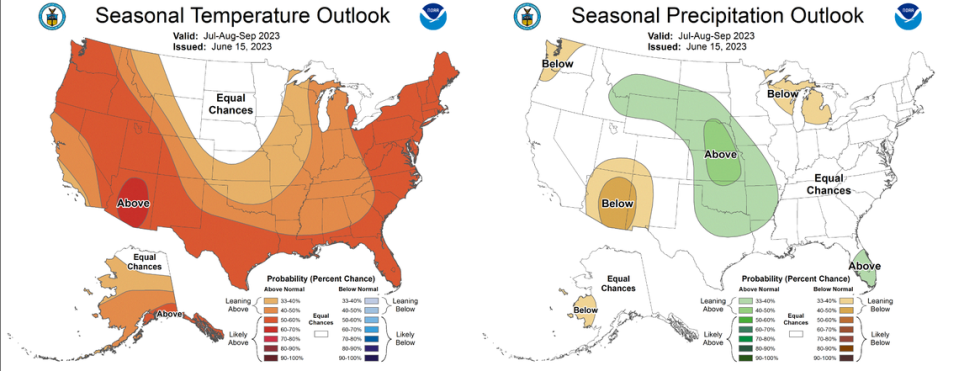Weather experts declare El Niño is in. Here’s what it is, what it means for Boise weather
Every year we seem to hear about El Niño and La Niña when it comes to the weather. Chatter about whether it’s an El Niño or La Niña year, what that means for our winters and summers, and whether it will be an active hurricane season.
Meteorologists recently declared that La Niña is out and El Niño is officially in, meaning a change in our weather is afoot.
But what exactly are El Niño and La Niña, and how do they affect our weather in Idaho?
How El Niño and La Niña work
El Niños and their opposites, La Niñas, are naturally-occurring weather phenomena that usually alternate every couple of years as a function of how the Pacific Ocean interacts with the air above it.
A La Niña occurs when the temperature of the sea is cooler than average in the eastern Pacific Ocean, resulting in less evaporation, weaker storms and less moisture in the atmosphere, according to the National Oceanic and Atmospheric Administration.
We just underwent a historic three-straight years of La Niñas, from 2020 to 2023, a rarity that’s only happened on two other occasions in recorded history, according to National Weather Service meteorologist Dave Groenert. The other two recorded times are 1973 to 1976 and 1998 to 2001.
“It typically ping pongs back and forth, in general, from one to neutral to the other and back,” Groenert told the Idaho Statesman. “Sometimes you do get return years, but to get a third return year, I don’t know if anyone really knows as to why that’s the case.”
El Niño occurs when trade winds — the permanent east-to-west winds that blow near the equator — weaken, allowing the Pacific Ocean’s warmer waters to push back east toward the United States West Coast.
This weakening allows the Pacific jet stream to dip further south, amplifying the storm track across the southern U.S. and Central America, but keeping stronger tropical moisture away from the north.

“El Niño — the warm phase of the El Niño-La Niña climate pattern — changes global atmospheric circulation in known ways, giving us an idea of potential upcoming weather and climate patterns,” NOAA stated in a June news release. “A stronger El Niño means global temperature, rain and other patterns are more likely to reflect the expected El Niño impacts.”
What does El Niño mean for Boise’s weather?
During an El Niño winter, the Pacific Northwest is usually drier and warmer, while the southern U.S. will experience wetter-than-usual conditions. El Niño doesn’t have as big of an impact on the Pacific Northwest in the spring and summer, Weather Service meteorologist Joel Tannenholz previously told the Idaho Statesman.
“There are too many other factors in weather to say that El Niño is directly responsible this far north,” Tannenholz said.
Moderate to strong El Niño’s have also been associated with drier-than-average conditions in the Pacific Northwest and above-average temperatures. From December to February, Boise typically sees an average of 3.95 inches of precipitation and 14.2 inches of snow, meaning totals will likely be lower than those two figures for the upcoming winter.
NOAA forecasts an 84% chance of a greater than moderate strength El Niño developing this winter and a 56% chance of a strong El Niño.
The Climate Prediction Center’s three-month forecast shows early signs of El Niño settling in. The forecast, which runs through September, has most of Idaho seeing a 50-60% chance of above-average temperatures and even chances for regular rainfall.


